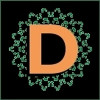Abstract
In certain literary works and iconographic traditions from the Middle Ages, trees and wood pass between brute matter and living object. In doing so, they attest to nonhuman timespans, disturb stable and stabilising boundaries between human and nonhuman, life and nonlife, and implicitly question the social construction of nature. This article approaches these trees in combination with contemporary ecological theory and criticism, in order to examine how they prompt stories, becoming actants in narratives in which human protagonists are recast as but one player in the rich and complex tangle of what Isabelle Stengers calls the 'worldly world'. Evoking the fragmented, even non-holistic form of the medieval florilegium (a collection of short written extracts around a particular theme), this essay argues that the Middle Ages can prompt us not simply to apply ecocritical concepts to an archive of texts and artefacts, but rather to think anew about past, present, and future. Far from irrelevant to the ecological concerns of the twenty-first century, these texts have the power to intervene in ecological theories, encouraging a self-reflexivity that is essential to the continuing project of ecocriticism.
How to Cite:
White, T., (2013) “Medieval Trees”, Dandelion: Postgraduate Arts Journal and Research Network 4(2). doi: https://doi.org/10.16995/ddl.289
Downloads:
Download PDF
745 Views
647 Downloads

